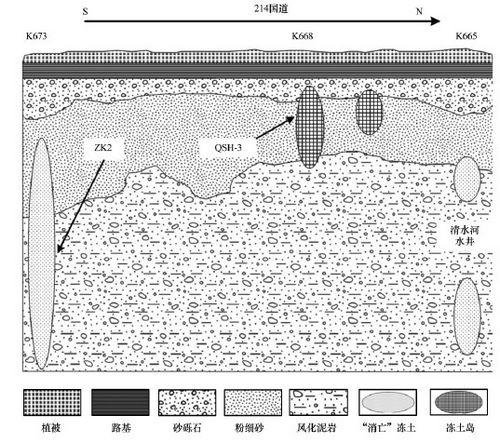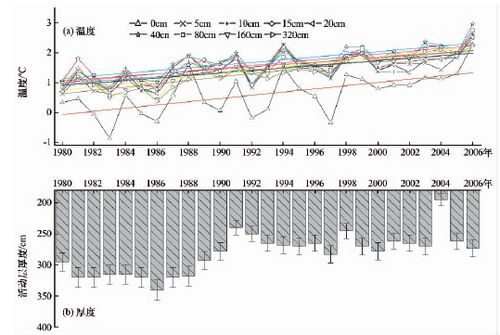Degradation of Permafrost and Cold-Environments on the Interior and Eastern Qinghai Plateau
Updatetime:2013-04-08From:
【Enlarge】【Reduce】
The interior and eastern Qinghai Plateau is located on the transition zones of seasonally frozen ground to predominantly continuous permafrost. Remarkable climate warming has been seen since the 1980s in the plateau. With climate warming and increasing human activities, the permafrost has degraded significantly during the past twenty years. It is found that the lower limit of island permafrost has shifted 5 km northwards in Qingshuihe on the south slopes of the Bayan Har Mountains. The lower limit of permafrost rose 90 m in the south and 100 m in the north slopes of the Bayan Har Mountains, respectively, during the period of 1991-2010. The lower limit of permafrost rose 80 m in the south and 50 m in north slopes of the Buqing Mountains, respectively, during the period of 1995-2010. The changes of active layer depth and ground temperature were also significant. The active layer depth decreased with a rate of 3 cm·a-1, and the annual mean temperature at the bottom of the active layer increased with a rate of approximately 0.05 ℃·a in Madoi Station in 1980-2006. Climate warming could result in degradation of permafrost by turning minus temperature into positive temperature on the ground surface, shorten the frost period, extend the thawing period and decrease the freezing/thawing index. The deterioration of cold environments is also discussed in this research.

A profile along G 214 from K673 to K665 in 2000,showing the northward shift of the boundary of island permafrost in Qingshuihe on the south slopes of the Bayan Har Mountains

Changes of ground temperature (a) and the active layer thickness (b) in Madoi Station
Download from the attachment




